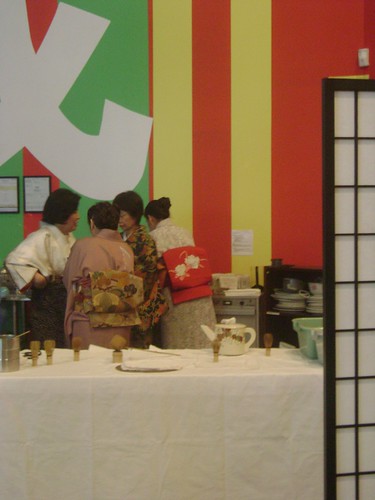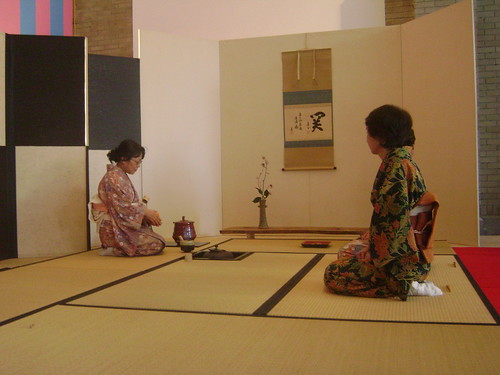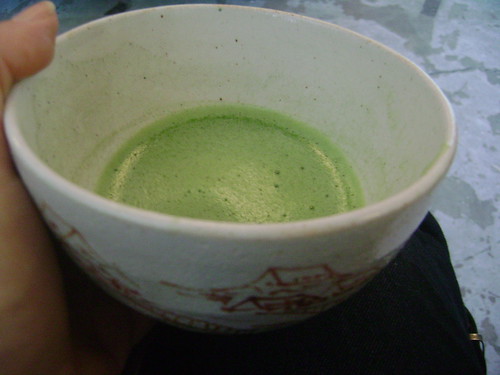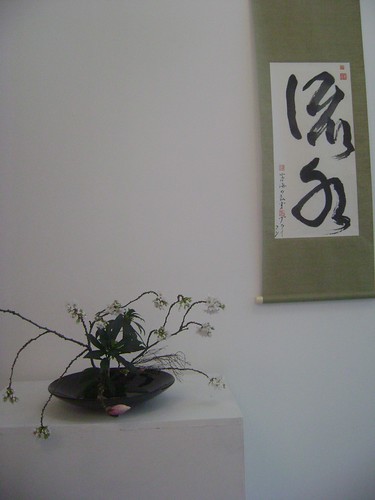World Tea Party
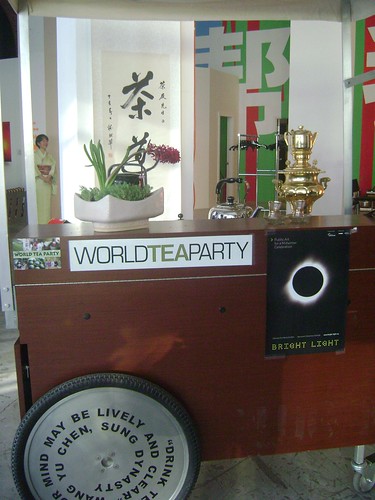
World Tea Party, originally uploaded by Ayala Moriel.
World Tea Party tea cart greets the guests upon arrival at Centre A, with a samovar and adorned with ikebana...
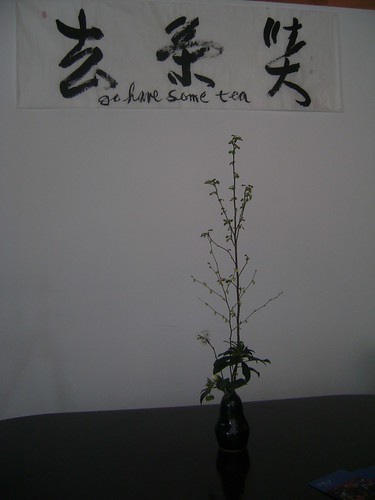
Go Have Some Tea, originally uploaded by Ayala Moriel.
On Monday afternoon, I attended an event that is part of the World Tea Party - one of the things that came to town for the Cultural Olympiad! This ongoing world-wide event is "a continually evolving fête éternelle developing through dialogue among people and cultures around the world".
The kitchen, where matcha was prepared for all the guests.
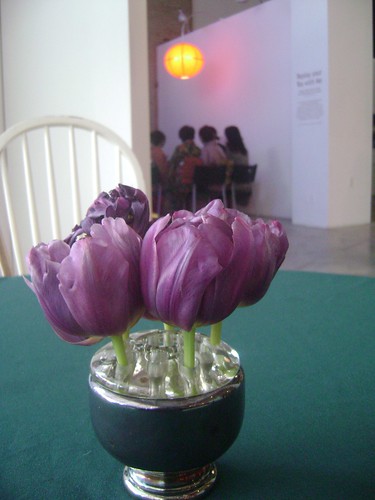
Gathering, originally uploaded by Ayala Moriel.
To me, this was the first Japanese tea ceremony I've ever witnessed. Upon arrival, a presentation was just wrapping up, so unfortunately I missed an educational component explaining this ancient tradition. Shortly after, members of Urasenke, in full kimono attire, served us a sweet - it was an oval dry cookie, I think it was made from rice and buckwheat flour. We were instructed to eat the cookie, and only than we were served the tea. The flavour of the tea harmonizes the sweetness of the cookie. This is completely the opposite than how I would think of doing it, I would think the cookie should be eaten after the bitter tea... You must forget everything about dipping biscotti or shortbread in your tea when you attend such a ceremony!
On a stage with tatami and the hearth in where the water was boiling, members of Urasenke Vancouver performed the tea ceremony. It was like watching a silent film of tea. I assume experiencing it rather than watching it, and knowing more about it would make for a more tranquil and meaningful experience. While the tea master and her guests were utterly quiet for the most part, the halls of Centre A were echoing with conversation which, in my opinion, took away from the experience for those observing.
Since it takes a lifetime to master Chado (the way of tea), I would not attempt to explain it here, but rather just share my observations and what meaning I found in doing so. In the Japanese tea ceremony, it seems that every otherwise mundane action takes a ritualistic role: Pouring the water with a bamboo ladle is done slowly to wash the chawans as well as for preparing the tea; wiping off the chawan (tea bowl) and chashaku (tea scoop) is done in very precise motions with a napkin that is folded and unfolded in particular fashion numerous time in a very specific sequence, and so on. You can read more about the tools and equipment of Chado here.
The ceremony is very, very, very structured. The entrance of the tea master and each guest or participant is choreographed according to ancient etiquette. Many of the movements have a lot to do with the traditional Japanese attire: folds in the kimono and obi are used to hold many of the tools for the ceremony, including the rice paper napkins for the sweets. The shared experience seems to stem from following the steps, and passing the sweets from the tea master (or host/ess) to the guests, and from one guest to another. And the same for the tea in the chawans, which are served to each guests separately. It is passes in a certain way so that all guests take part in serving the tea to the next one on their turn.
Below are just a few pictures (many turned out blurry so it does not show the process so well, but at least gives a visual idea of what a tea ceremony is like):


